End-to-end pipeline for document recognition
Document AI
Tasks
- Document Layout Analysis: object detection task for document images
- Definition: process of automatic analysis, recognition and understanding of images, text, table/figure/chart information and positional relationships in the document layout
- Faster R-CNN, Mask R-CNN, SSD, YOLO
- basic units: e.g. headings, paragraphs, tables, figures, charts
- large-scale weakly supervised document layout analysis datasets: PubLayNet, PubTabNet, TableBank, DocBank
-
Visual Information Extraction
- Definition: extract entities and their relationships from a large amount of unstructured content in a document
- Visually rich documents: text data whose semantic structure is not only determined by the content of the text, but also related to visual elements, such as layout, typesetting formats as well as table/figure structures
-
Document VQA
- similar goal to RAG
-
Document Image Classification
Visual Information Extraction (VIE)
Deep-learning-based VIE methods can be catergorized as:
- Grid-based methods
- GNN-based methods
- Large scale pre-trained models
- End-to-end methods
- Few-shot methods
- LLM-based methods
Grid-based methods
- Treat the document as a 2D matrix, with text embeddings filling the pixels inside the text bounding box
- Computationally efficient, may not fully exploit the features of text regions in small sizes
- External OCR model
Open-source models:
- Chargrid: Katti et al. Chargrid: Towards Understanding 2D Documents. EMNLP, 2018.
- ViBERTgrid: Lin et al. ViBERTgrid: A Jointly Trained Multi-Modal 2D Document Representation for Key Information Extraction from Documents. ICDAR, 2021
GNN-based methods
- Consider text segments as graph nodes and encode the relations between segment coordinates for edge representations
- Good balance between cost and performance
- Inherent characteristics of GNN, such as over-smoothing and gradient vanishing, makes the training process challenging
- External OCR model
Open-source models:
- PICK: Yu et al. PICK: Processing Key Information Extraction from Documents using Improved Graph Learning-Convolutional Networks. ICPR, 2020
- GraphDoc: Zhang et al. Multimodal Pre-training Based on Graph Attention Network for Document Understanding. arXiv preprint, 2022
- GeoContrastNet: Nil Biescas, et al. GeoContrastnet: Contrastive Key-value Edge learning for Luanguage-Agnostic Document Understanding. ICDAR, 2024.
Large scale pre-trained models
- Leverage pre-training with a large amount of data to obtain effective generic models
- Computationally expensive
Open-source models:
- LayoutLMv3: Huang et al. LayoutLMv3: Pre-training for Document AI with Unified Text and Image Masking. ACMMM, 2022.
- LiLT: Jiapeng Wang, Lianwen Jin and Kai Ding. LiLT: A Simple yet Effective Language-Independent Layout Transformer for Structured Document Understanding. ACL, 2022.
- StrucTexT: Li et al. StrucTexT: Structured Text Understanding with Multi-Modal Transformers. ACMMM, 2021.
- DocFormer: Appalaraju et al. DocFormer: End-to-End Transformer for Document Understanding. ICCV, 2021.
- StructuralLM: Li et al. StructuralLM: Structural Pre-training for Form Understanding. ACL, 2021.
- BROS: Hong et al. BROS: A Pre-Trained Language Model Focusing on Text and Layout for Better Key Information Extraction from Documents. AAAI, 2022.
- ERNIE-Layout: Peng et al. ERNIE-Layout: Layout Knowledge Enhanced Pre-training for Visually-rich Document Understanding. EMNLP Findings, 2022.
- GeoLayoutLM: Luo et al. GeoLayoutLM: Geometric Pre-training for Visual Information Extraction. CVPR, 2023.
End-to-end methods
- To reduce OCR error accumulation
- New
Open-source models:
- TRIE: Zhang et al. TRIE: End-to-End Text Reading and Information Extraction for Document Understanding. ACMMM, 2020.
- Donut: Kim et al. OCR-free Document Understanding Transformer. ECCV, 2022.
- Dessurt: Davis et al. End-to-end Document Recognition and Understanding with Dessurt. ECCV, 2022
- StrucTexTv2: Yu et al. StrucTexTv2: Masked Visual-Textual Perdiction for Document Image Pre-training. ICLR, 2023.
- Kuang CFAM: Kuang et al. Visual Information Extraction in the Wild: Practical Dataset and End-to-end Solution. ICDAR, 2023.
- Pix2Struct: Lee et al. Pix2Struct: Screenshot Parsing as Pretraining for Visual Language Understanding. ICML, 2023.
- UDOP: Tang et al. Unifying Vision, Text, and Layout for Universal Document Processing. CVPR, 2023.
Few-shot methods
- Only a small number of samples
- New
Open-source models:
- N/A
LLM-based methods
- Prompt engineering, fine-tuning
- Multi-image document understanding
*Open-source models:
- mPLUG-DocOwl: Ye et al. mPLUG-DocOwl: Modularized Multimodal Large Language Model for Document Understanding. arXiv preprint 2307.02499, 2023.
- UReader: Ye et al. UReader: Universal OCR-free Visually-situated Language Understanding with Multimodal Large Language Model. EMNLP Findings, 2023.
- Monkey: Li et al. Monkey: Image Resolution and Text Label Are Important Things for Large Multi-modal Models. CVPR, 2024.
- OmniParser: Wan et al. OmniParser: A Unified Framework for Text Spotting, Key Information Extraction and Table Recognition. CVPR, 2024.
- LayTextLLM: Lu et al. LayTextLLM: A Bounding Box is Worth One TokenInterleaving Layout and Text in a Large Language Model for Document Understanding. arXiv, 2024.
Potential Solutions: Document AI
Problems
- Current end-to-end models only consist the landmark detection & the OCR part, not including the segmenation module.
- Licensing: non-commercial use
- Latency?
What end-to-end model solves
- Layout analysis (one-for-all documents)
- Joint optimization
- Unified evaluation
- Mitigating error propagation
- VQA?
Donut (Document understanding transformer)

Contributions:
- OCR-free approach
- Pre-training with SynthDoG (their own synthetic dataset generator)
Model:
- Transformer-based visual encoder and textual decoder
- Visual encoder (Swin Transformer) for extracting features from a given document image
- Textual decoder (BART) maps the derived features into a sequence of subword tokens to construct a desired structured format (e.g. JSON)
- Model input: teacher-forcing; generate token sequence given prompt
- Output conversion: output token sequence --> JSON
- Metrics: field-level F1 score, Tree Edit Distance
Example:
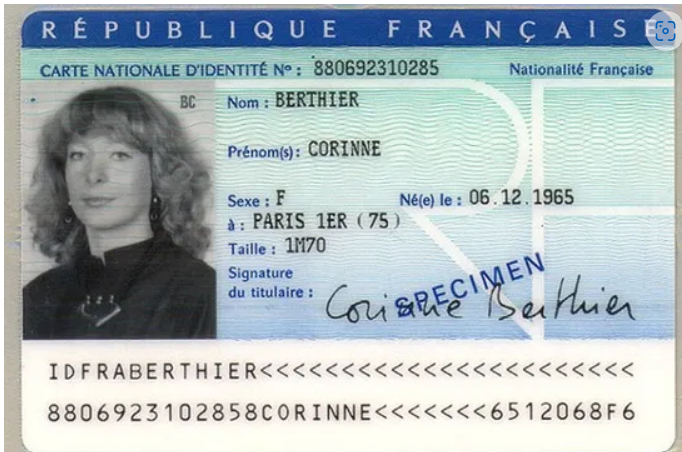
{"predictions": [{
"surname": "Berthier",
"name": "Corinne",
"sex": "F",
"birthday": "12/06/1965",
"birthplace": "Paris 1er (75)"
}]}
LayoutLMv3
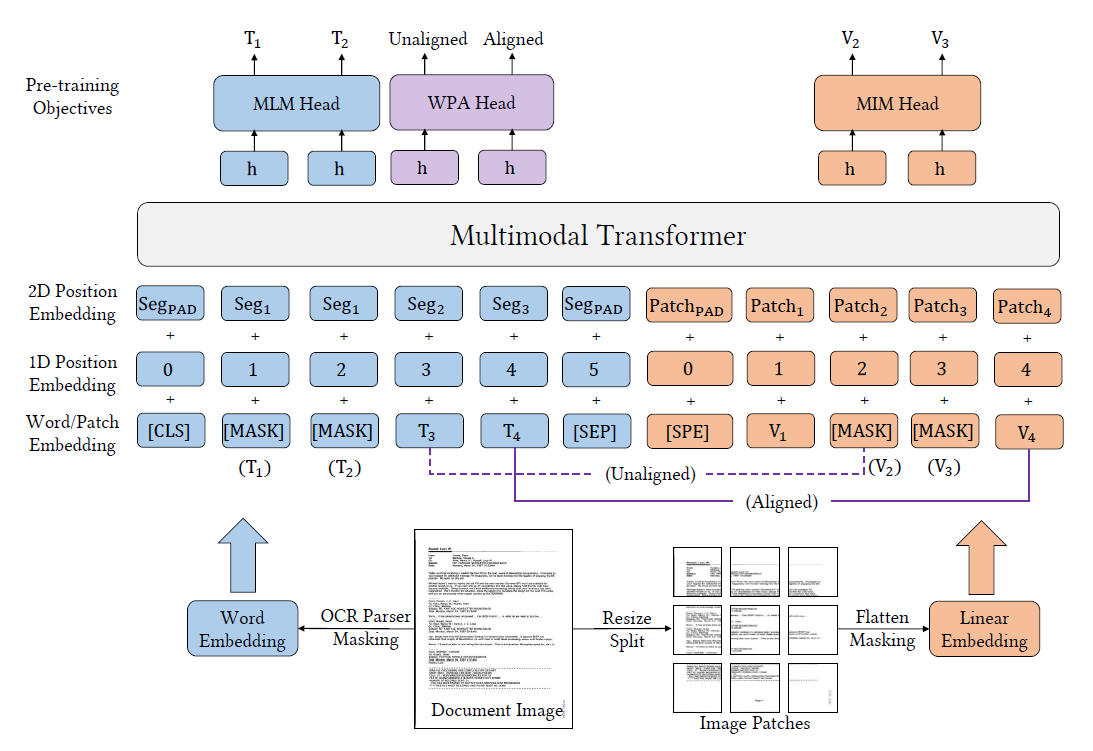
Modifications:
- Multi-task learning approach: attach head for detection and OCR
- Input: whole image, bbox (toggle OCR=False), type, text
- Output: bbox (for scan quality check), type, text
Example:
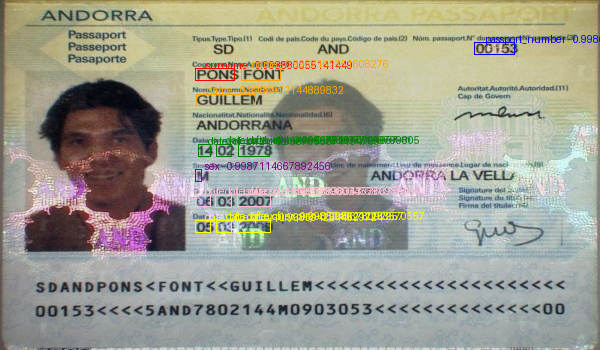
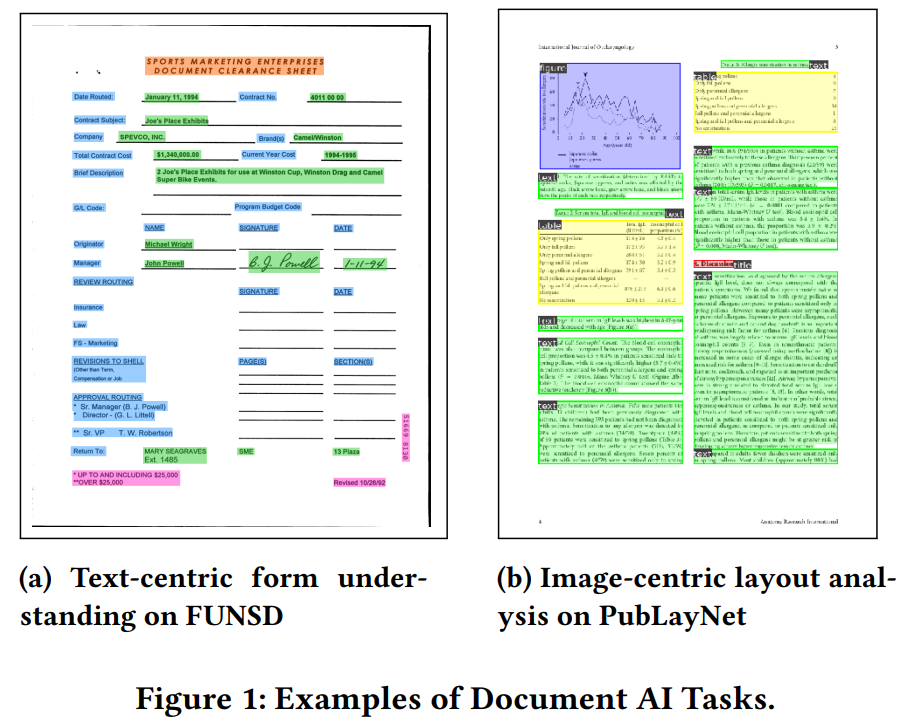
Misc.
Datasets
- MIDV
- IAM
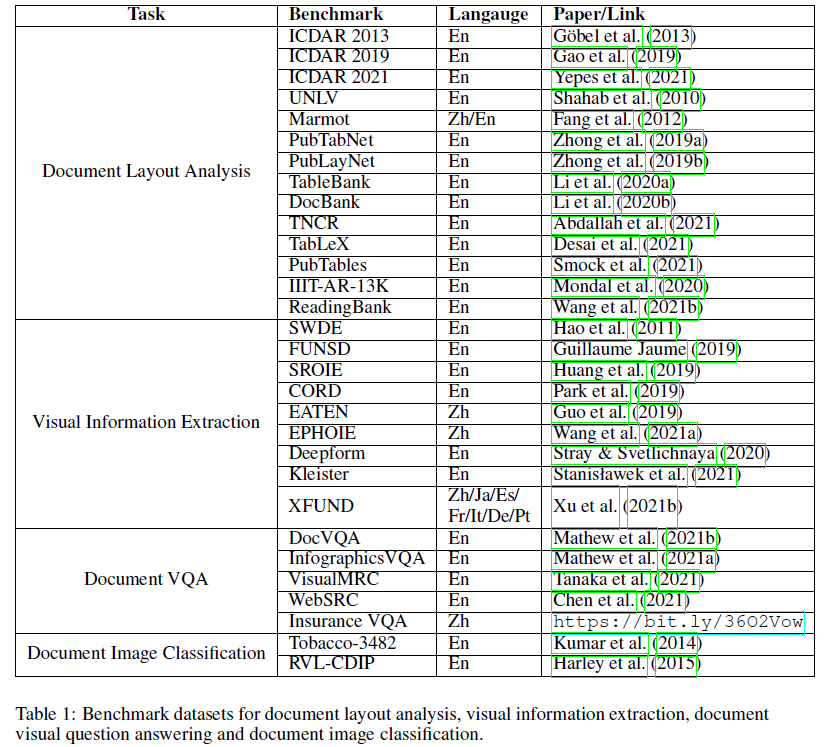
TO-DO
- Metrics
- Parameter size, latency (inference speed)
API services
- Regula Forensics
- Google Document AI
- Azure AI Document Intelligence
- Amazon Textract
References
- https://github.com/SCUT-DLVCLab/Document-AI-Recommendations/blob/main/Approaches/approaches_vie.md
- https://medium.com/@paul_lefevre/information-extraction-from-id-documents-with-donut-792ca80d2a93
- https://www.nidc.dk/en/Document-Database/ID-databases
- https://github.com/PaddlePaddle/PaddleOCR/blob/release/2.3/doc/doc_en/pgnet_en.md